
| << back to palms list Washingtonia Robusta (Washingtonia robusta) |
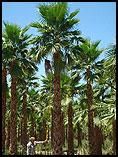 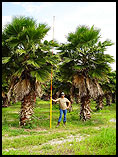 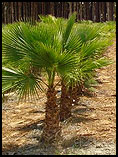 Click to Enlarge Photos 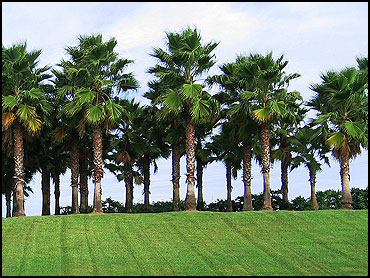  From 6-12' Clear Trunk 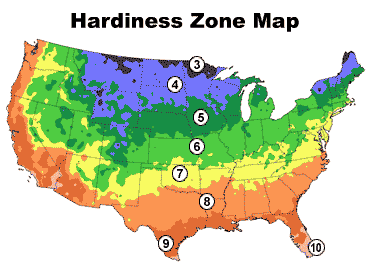 |
Description Soaring to over 100 ft (30.5 m), this skyscraper of the palm world is a striking sight when planted at equal intervals along a boulevard or when snuggled up in groups against high rise buildings. The gray trunk is ringed with closely set leaf scars although usually at least part of the trunk remains covered with dead leaves that hang in a thatch. The solitary trunk, about 10-12 in (25.4-30.5 cm) in diameter, bulges at the ground and becomes slender as it approaches a crown of large palmate leaves with gracefully drooping leaflet tips. These are rich glossy green and grow to about 5 ft (1.5 m) long and 4 ft (1.2 m) wide. They are borne on 3 ft (0.9 m) orange leaf stems that are edged with vicious sawtooth spines. As the leaves die, they fall against the trunk to create the "hula skirt" effect for which this palm is famous. Unfortunately this shaggy skirt of dead dry leaves is a fire hazard and provides a home for rats and other undesirable creatures. Many municipalities in California require that the dead leaves be removed which can be quite a hassle when they're dangling 80 ft (25 m) up in the air! In Florida this is not such a problem as the humid climate and occasional high winds tend to keep the palms skirt-free. Washington palms in Florida usually do not reach maximum height, tending to get their crowns blasted off by lightning when they begin to tower over neighboring trees. In early summer large, light beige, branched inflorescences extend past the leaves growing 7-10 ft (2-3 m) long. These hold clusters of small whitish flowers that mature into 1/2 in (1.3 m) black berries that are easy (for a palm) to germinate. Location This palm is native to the desert mountain valleys and canyons of Sonora and Baja Mexico. It is a popular landscape plant in Florida, California and Arizona and in areas where it is hardy throughout the world. Culture Washington palm prefers a moderately rich well drained soil but can survive on poor soils, even sand. Light: It does best in bright sunny conditions but Washington palm will tolerate some shade. Moisture: Washington palm is drought resistant when established, but looks better and grows faster when given adequate moisture. Hardiness: USDA Zones 9-11. Washington palm is hardy down to about 20ºF but foliage will be damaged at that temperature. Propagation: Propagate by seeds, which will germinate within 2 months. Usage Use the Washington palm for formal groupings, street plantings, and groves in large open areas - these are the palms planted along Venice Beach and other California beaches. Young plants can be grown in containers and give a tropical look to patios and decks. This palm should only be used in large open areas - it is NOT a good palm for residences with small yards. Features Washington palm has many fine attributes including salt resistance and fast rate of growth. This palm is inexpensive, easy to transplant and easy to find. It is available from nurseries, home centers and discount garden stores. It is becoming one of the commercial landscaper's favorite palms - appearing in startling numbers along Florida's urban freeways, and in commercial and industrial developments. The California Washingtonia (Washingtonia filifera) is very similar but has a stockier, more massive trunk and is said to be somewhat more cold tolerant. |
Copyright © 2008-2018 Groundworks, All Rights Reserved.
The Professionals Choice for Specimen Palms Since 1986
800-753-5127